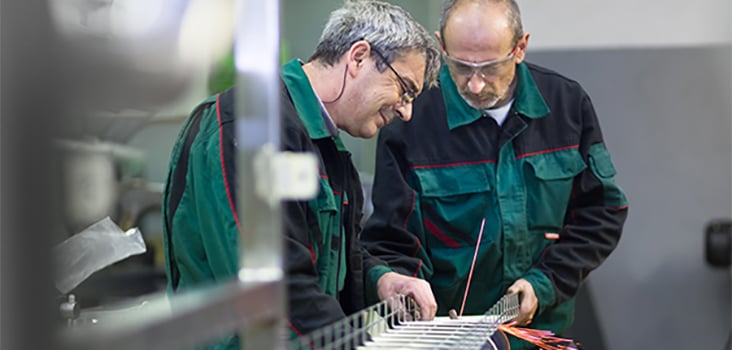
What You Should Know about Your Aging Employees' Health
Tenured employees are highly skilled. They have decades of experience in what they do and a wealth of legacy knowledge that benefits their companies every day. They’re loyal. They have a strong work ethic.
And they’re getting old. According to the National Institute for Occupational Safety and Health, more than 20% of the American workforce is age 55 or older—a number that will continue to grow as we approach 2020. In the manufacturing industry, this number increases to nearly 25%--or 1 in every 4 employees.
With an aging workforce come several health challenges. By knowing what these challenges are, employers can take steps to help reduce their risk.
Here are three health concerns for older workers:
Older workers are more prone to chronic conditions.
With age comes increased risk of chronic conditions, such as high blood pressure and obesity. Employees with chronic health conditions are estimated to miss 450 million more days of work each year compared to healthy workers—costing employers an estimated $153 billion in lost productivity every year. Chronic conditions such as obesity may also contribute to a higher rate of supposedly “unavoidable” accidents in the workplace, such as back injuries, sprains, strains, and falls. One study found that these accidents are 200% more likely to happen to obese employees.
Older workers take longer to recover from injury.
According to the Bureau of Labor Statistics, older workers take nearly two weeks longer than younger workers to recover from injury. Part of this is due to their increased risk of chronic conditions, such as high blood pressure and diabetes; part is simply due to the fact that physically, older bodies are not as resilient as their younger counterparts. As a result, claims costs for older workers injured on the job are often significantly higher than those of younger workers. Age-related conditions, such as increased sleep disruption, may also increase risk of injury.
Older workers have to work at the upper limits of their physical capacity.
Age typically reduces muscular strength and bone mass, which forces older workers to operate closer to their maximum strength level. This greater physical stress increases the risk of musculoskeletal disorders and injuries such as sprains, strains, joint dislocation, carpal tunnel syndrome, tendonitis, and lower back pain—especially in manual labor jobs.
The Solution
While there’s no one solution to solve these health issues, there is one provider who can address all three. With an occupational health provider, you can enjoy the benefits of employing tenured workers whole reducing the risks associated with age.
An occupational health program can include a variety of services to fit the unique needs of your workforce. Your program can include onsite wellness programs to reduce chronic conditions, an effective injury care plan that gets employees back to work quickly, and physical therapy solutions that reduce and treat musculoskeletal disorders.
Contact one of our workforce experts to find the right solution for your aging workforce—and to see what you can do to start maximizing productivity today.



